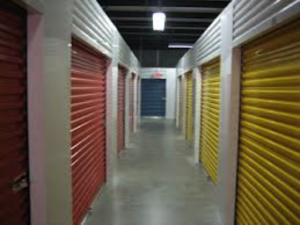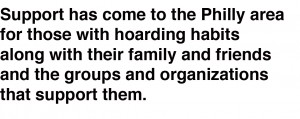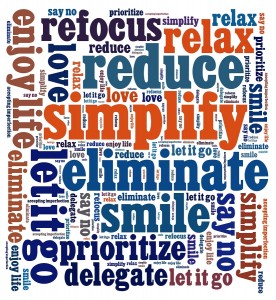When your home isn’t peaceful, a place you can retreat to, or a safe haven from the outside world, it will affect you, but how is up to you.
As a professional organizer, I get calls all the time from people expressing thoughts of overwhelm and sharing other complaints such as:
“I can’t live this way anymore”
“I feel stuck”
“I am drowning”
“I don’t know how this happened”
They also tend to express feelings of shame, distress, self doubt, low self esteem, loneliness, and frustration — to name a few! At this point, I reassure them that these feelings aren’t who they are, or who they’ve become. Clutter can’t take away their ‘Greatness’ as a person!
Immediately, I want to assist these people in seeing for themselves that the disorganized mess they have can be fixed with effort and commitment. After listening to their tale, I usually hear some version of “Life wasn’t always this way for me,” or, “My space used to be…” At this point in the conversation, I give a few positive suggestions such as:
It is important to keep in mind that change is a constant, and at times, things become unmanageable temporarily. You can physically clear your clutter and clear the ‘mind chatter’ by having help, support, focus, and intention. One key is to have Patience with yourself. It’s important to take stock of the positives, your accomplishments, and what you are striving to achieve. In doing so, self doubt, shame, loneliness, and low self-esteem can disappear as quick as the clutter, if you are willing to LET IT GO! Remind yourself that life changes and so do you!
Remember this, these thoughts and feelings don’t represent who you are or who you think you have become! The clutter does not define who you are. Each one of us is a perfect, unique energy force.
Please remember your ‘Greatness’!
“Help! I can’t stand it anymore! My office is a disaster. Papers are piled everywhere. I don’t know where things are. I don’t know what supplies I have until I run out. My bulletin boards have announcements for events that happened two years ago attached to them. I’m behind on my work, and I hate being in my office. My life is a mess!”
“Was this a phone call I received from a potential client?” you may ask. No. This is what I said two weeks ago when I felt like I was drowning in paperwork, and my life was a mess. “But wait,” you exclaim. “You’re a Professional Organizer. You know how to organize stuff. Why can’t you just organize your office?” The answer is that even we, who are experienced and proficient organizing other people’s things, sometimes cannot do it for ourselves.
Every morning I would walk into my office with incredible determination. “This will be the day that I finally and completely organize my office and my life!” But when I walked into my office, something happened. I looked at the piles of paper and the disorganization, and I became paralyzed with dread.
It doesn’t matter whether the area that is disorganized is an office, a kitchen, a bedroom or a play room. Sometimes it just feels as though as much as you really, really want to get organized, you’re just having a hard time doing it. So I asked myself what I would tell a prospective client if they called me with a similar situation.

But what do you do if you can’t get yourself to commit to tackling that cluttered area for even five minutes? Take a tip from a professional who has been-there-done-that. Either call a friend who is nonjudgmental and willing to help or call a professional; which is what I did. I figured that if I call a doctor when I’m sick and go to the dentist when I have a toothache, I should call a professional organizer when it feels like my (insert name of area here) needs organizing. What about you? Take just 5 minutes and call for help. Now? Yes! If not now, when?
 I love the idea that someone can use a storage unit as a business location, a man cave, a wine cellar, or as a place to store their cool sports car.
I love the idea that someone can use a storage unit as a business location, a man cave, a wine cellar, or as a place to store their cool sports car.
I love that a college student can use a storage unit to store their dorm rooms over the summer and that someone can store excess furniture while their house is being marketed for sale.
I love that a builder can use a storage unit to store supplies while they are doing a renovation.
I hate the idea that people are using storage units to store old, dirty appliances, inexpensive furniture, and things that are eventually going to go in the trash, get donated, or get sold.
I hate that people abandon their units with valuable items in storage units and that there are reality TV shows based on this.
During the past couple of weeks, we have worked in storage units, and I am so glad we could help clients get out from under the stuff that was being stored— which had less monetary value than the month’s rent of the unit.
Understandably, people go into storage units for a valid reason initially. In the words of my eloquent husband, “storage units can take on a life of their own.” The items being stored take root in the unit, and the bill is on autopay. This makes it easy to forget or avoid the whole thing.
Many times people no longer know what is in their unit— a hint to me that there is minimal value, emotionally and financially.
Before you make the decision to take on a storage unit, think of the following:
If you answer these questions and can develop a plan, rent the unit.
I hope this advice helps you make a good decision and prevents you from being burdened by a storage unit that takes on a life of its own. If renting a storage unit is the right thing for you, I hope that you have picked up a hint or two to simplify the process.
 Can you believe another school year has come to a close? They just fly by. Although it’s the last thing on most mom’s and dad’s minds in June, come late August, preparing for ‘Back-to-School’ can be a hectic time to recon with.
Can you believe another school year has come to a close? They just fly by. Although it’s the last thing on most mom’s and dad’s minds in June, come late August, preparing for ‘Back-to-School’ can be a hectic time to recon with.
As we begin the second month of summer, I want to share my annual routine in addressing this issue. Although, as you’ll see, I choose to get an early start; you still have the luxury of setting aside less than an hour to make the transition from summer to ‘Back to School’ stress and hassle free.
With that being said, I always use the last day of school as my barometer to get all my boys’ school supplies sorted, purged, donated, reorganized, and stored away until September. I’ve found few people that do it. Most wouldn’t even consider it. Believe it or not, being organized the first day of school starts with a little ‘to do’ list the final day of the current school year!
In our house, the last day of school signifies the official start of summer, and as you can imagine, in most every household, the excitement is palpable. Each year, I pick the boys up at school which allows me the opportunity to see how excited they are and the smiles on their faces when the bell rings and they charge out of the school. It’s also a wonderful opportunity to say goodbye to friends, teachers, and classmates. Going out to lunch continues the euphoria, and this is where I set the expectation of going home and organizing their school supplies for next year. Realistically, who would want to contend with this the last day of school? But, from start to finish, it only takes about fifteen to thirty minutes.
The first decision is to ascertain if their school bag is still in good enough condition to weather next year. If so, it is cleaned out and stored in our coat closet until September. If not, it is cleaned out and put in our donation pile. Moving on, the purging continues with pens, pencils, pencil cases, rulers, scissors, crayons, markers, folders, etc. The rule of thumb is trash, donate, or keep. Trash is immediately taken out, donations are put in our designated donation pile, and anything that can be used in September is stored in the school bag for next year. If their school bag is being donated, then, the supplies are stored in either a zip-lock bag or container until September.
You’ve only just read this. Yet, aren’t you breathing easier knowing when Summer ends, ‘Back-to-School’ is on auto pilot? Have a happy, safe, and enjoyable summer.

Along with four other Professional Organizers, I had the opportunity to attend a meeting of the Philadelphia Hoarding Task Force and was excited to find out that we are NOT ALONE!
The result of hoarding behaviors touches countless lives. The most obvious is the lives of those with hoarding habits, those who live with them, their children, family members, and close friends. Maybe, less obvious, is the effect of this life style on their surrounding communities. Often times there have been multiple attempts to deal with and support those with hoarding habits resulting in little change and outcomes that don’t last long. Interventions usually focus on having the person divest themselves of things that clutter their living spaces. Frustration, hard feelings are the typical results as little seems to penetrate the multifaceted web of commingled issues, emotions and unrelenting habits that have, more likely than not, spanned the individual’s life time.
This particular and persistent practice of collecting is the manifestation of a complex network of interpretations for the person who engages in hoarding behaviors. For many who are observing these hoarding tendencies, it is virtually impossible to understand, decipher, and make sense of the complexities involved in the condition. Working side by side with clients who engage in hoarding behaviors, I have heard very elaborate and creative explanations for their holding on to what looks like, to anyone else, seemingly useless items. Their ‘need’ to save things is logical in their view, however, the result of their logic is counterproductive to their desire to alleviate their situation that impacts themselves, their loved ones, and in some cases, their community.
Because the result of hoarding behaviors looks like disorganization and clutter, at first glance, it would seem like working with hoarding situations is perfectly suited for the organizing profession. Initially, that was the thinking of the pioneers of our profession until they began to notice that successful organizing methodologies, principles, and products did not seem to work with certain clients. During those early years, organizers tried to impact situations where shower rods became alternate hanging spaces for clothes, dining room tables became storage for piles of papers often flowing over to the accompanying chairs, and beds housed everything else leaving little to no room for the owner. The result, a sub group of NAPO was birthed. Back then it was called NSGCD (The National Study Group on Chronic Disorganization). Today, it is its own independent organization called The Institute for Challenging Disorganization (www.ChallengingDisorganization.org). Their mission is to provide education, research, and strategies to benefit people challenged by chronic disorganization.
Working with these situations for the past 11 years as well as being a member of NAPO and ICD, I have learned that simply talking about the ‘stuff’ with clients is limiting and often times futile. Getting to the reasons and explanations for their need to hold on to items helps to unlock the interpretation that justifies their hoarding behaviors and often times can loosen the grip of their ‘need’ to hold on to things. However, delving into the root cause of these tendencies is outside an organizer’s skill set and training. Teaming up with other professionals such as social workers and therapists, offers more hope for longer-lasting results.
Finding these opportunities to team up with other professionals working with people challenged with chronic disorganization has not been easy until recently when the Greater Philadelphia Chapter of NAPO (NAPO-GPC) was contacted and invited to participate on the Philadelphia Hoarding Task Force. An impressive list of local organizers accepted the invitation, and it was love at first meeting! Finally, we are NOT ALONE in our work with these clients!
Still in its infancy, the mission of the Philadelphia Hoarding Task Force, co-chaired by David Wengert from the Community Legal Services and Katherine Martin, Deputy Policy Director from the Mayor’s office, is to “ensure positive outcomes for those individuals who are impacted by hoarding.” Although the Task Force does not provide direct services, its role is to ensure access to resources, training for provider organizations, and education about hoarding in Greater Philadelphia”. The meeting that I attended with four of my collogues was comprised of representatives from the Philadelphia Police and Fire Department, Licenses & Inspections, Philadelphia Corporation for Aging, and Clutterers Anonymous, to name a few. Each of the representatives brought their unique perspective to the meeting. The shared conclusions was that the work of the Task Force should focus on the individual, not the problem, i.e. the ‘stuff’ and that this perspective should permeate all efforts made by the Task Force, especially in the educational trainings it provides.
A shared understanding of the complexity that leads to hoarding behaviors among the organizations that confront these circumstances, along with sharing resources, expertise, accountabilities, and services, was music to all of our ears!
Finally, we as organizers, can say, we are NOT ALONE in our work with clients who are struggling with habits of hoarding! Collaborating with other professionals helps us offer those challenged by hoarding habits a more holistic service approach, and a hopeful future.
Suggested Resources:
 Typically in our society, we acquire items, things, and stuff. We use our valuable time to acquire these so called treasures. It may have felt good to collect and accumulate. Yet, when it’s out of control it appears as clutter and usually those feelings change. Overwhelm shows up. That’s the signal, the “red flag”, that it is time to take some action. One action could be evaluating and accessing the reasons you have what you have. We are not talking about items that serve a purpose, are useful, and make your life better.
Typically in our society, we acquire items, things, and stuff. We use our valuable time to acquire these so called treasures. It may have felt good to collect and accumulate. Yet, when it’s out of control it appears as clutter and usually those feelings change. Overwhelm shows up. That’s the signal, the “red flag”, that it is time to take some action. One action could be evaluating and accessing the reasons you have what you have. We are not talking about items that serve a purpose, are useful, and make your life better.
Are you holding on dearly to the “stuff” that:
1. Represents “Who” I am, or “Who” I was, or “Who” I want to become
Do you like any of these “Who’s”? Sometimes they don’t align with who you are presently, or they are reminders of the past, or even reminders of in-completions. If you don’t feel energized or happy with them, then why keep them around?
2. I may need this someday
Future thinking that could keep you up to your eyeballs in excess stuff. It could be said this indicates a lack of trust in the future. Our thoughts can create our reality. If unconsciously your thoughts are coming from a place of lack, you will create that. What do I mean? If you trust that you will have all you need , you will have it!
3. I got this as a gift
Just because your favorite person bought this doesn’t justify saving space for it if you don’t need, want, or like it. Re-gifting or donating gives it a new life from gathering dust or buried in a pile. Using places for unwanted items takes away your precious space.
4. Family relics that have been passed on to me
So maybe you have inherited these things that have no meaning or sentimental value to you. If you feel you want to memorialize the people, choose a few items and get creative. Make a shadow box or a special area to display them. If you will have joy and feel happy seeing these items in your home, then that’s what counts!
5. I feel secure having this/ Can’t have empty space
No matter how many possessions you acquire the need for more will occur. Remember to keep what makes you happy, and give away what you don’t like. If you don’t like empty space, look at why. Also keep in mind that no matter how much you have, keep these areas safe and accessible. This is your home and a place to retreat to from the outside world.
6. It cost so much/got it for free
It’s all relative to how you look at value. Whether you spent more on an item or got it for free it comes down to how you view this. When looking at an item in this category to purge or keep, check out if your beliefs or values around the money are holding you back from making the decision. This awareness may open you up to making a decision based on what you like regardless of the cost.
Looking at these categories and evaluating brings self awareness and conscious choices. This awareness can lead you to taking another step; recognizing what’s behind your decision making. If you choose to recognize these things it might set you free. One being mental clarity and then giving yourself the freedom to make a choice. The choice of physically letting items go that you don’t really want, or keeping what you truly treasure!